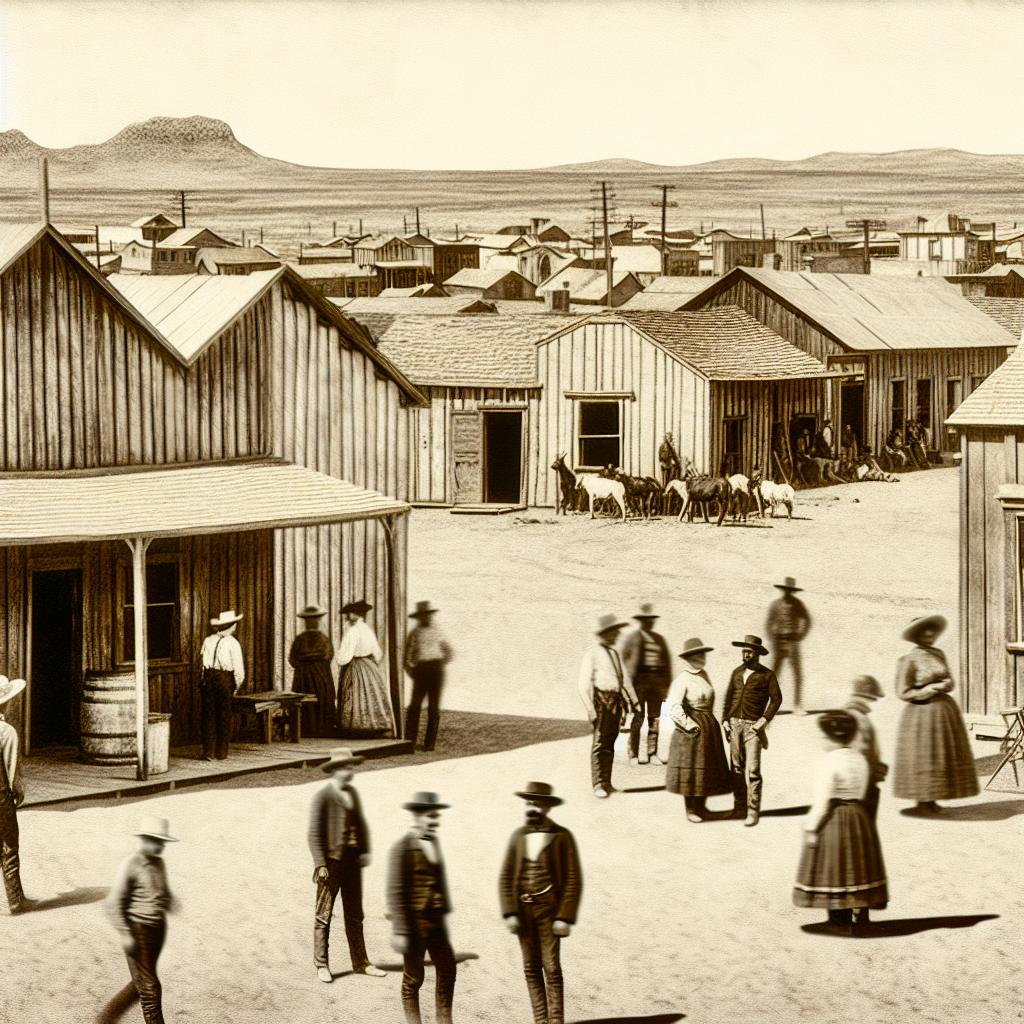Introduction to Wichita’s Role in the Wild West Era
Wichita, Kansas, held profound significance during the latter part of the 19th century, marking it as a central figure in the sprawling tapestry of the Wild West era. Beyond its initial guise as a modest trading post, Wichita rapidly blossomed into a bustling urban center that played a pivotal role in shaping the economic, social, and cultural landscapes of its time. This metamorphosis into a quintessential frontier town was largely driven by the vibrant atmosphere that surrounded it, teeming with opportunities and challenges alike.
The Cattle Trade and Wichita
Understanding Wichita’s transformation during the Wild West era necessitates a detailed examination of its involvement in the cattle trade. This trade formed the backbone of Wichita’s economic structure and was the main engine driving its growth and development. The city’s strategic location along the Chisholm Trail—a vital artery on the map of cattle routes—positioned it as a crucial juncture for ranchers seeking to transport cattle from the expansive plains of Texas to burgeoning railway terminals in Kansas. These cattle were subsequently shipped to markets in the eastern United States, thereby establishing Wichita as a leading cattle trade hub.
The Influence of the Railroad
The rapid expansion of railroad networks in the early 1870s cannot be overstated when discussing Wichita’s economic ascent. With the advent of the railroad, the city experienced unprecedented ease in the transportation of not only cattle but also a myriad of other goods. This infrastructural advancement acted as a catalyst for economic prosperity, solidifying Wichita’s position on the map of significant economic centers of its era.
Wichita’s Notable Figures
Every narrative about Wichita during the Wild West era would be incomplete without mentioning the influential figures that passed through its streets. Chief among these was the legendary Wyatt Earp, whose stint as a policeman in Wichita during the early 1870s laid the foundation for his later fame. Earp’s time in Wichita was instrumental in sharpening his skills in law enforcement, skills that would later earn him both respect and notoriety across the Old West.
The Earp Legacy
Wyatt Earp’s impact was complemented by his elder brother, James Earp, who also played a significant role in maintaining the uneasy balance of law and order in Wichita during this vibrant period. The Earp brothers’ involvement was not just about enforcing the law; it was a testament to the challenges of managing the turbulent environment characteristic of a bustling frontier town, where divergent interests often crossed paths.
Challenges and Decline
Despite the prosperity and growth Wichita enjoyed, the period was not devoid of challenges. The success of the cattle trade brought with it a surge in population, accompanied by inevitable disputes and conflicts among ranchers, cowboys, and local businesses. While law enforcement worked diligently to maintain order, the rapid growth presented significant hurdles that were sometimes difficult to overcome.
Changing Tides in the Cattle Trade
As the late 1870s approached, Wichita began to experience a decline in its dominance over the cattle trade. This was in part due to the emergence of other railheads and alterations in cattle trails that redirected the flow of trade to towns such as Dodge City. Consequently, Wichita faced economic pressures to diversify its economy, moving away from its heavy reliance on the cattle trade.
Wichita’s Legacy
The legacy of Wichita’s involvement in the Wild West era endures today, etched in the city’s historical sites and institutions dedicated to preserving this dynamic chapter of American history. Wichita’s substantial role in the cattle trade and its association with notable figures from the era form an intrinsic part of its identity. Through museums and historical archives, visitors and historians alike are afforded a glimpse into Wichita’s vibrant past, celebrating its status as a Wild West mainstay.
For those seeking to delve deeper into Wichita’s historical journey and its critical role in the Wild West era, additional resources can be explored at the Kansas Historical Society. Here, one can uncover the stories and artifacts that paint a vivid picture of a city that was more than just a backdrop to history—it was a central player in the drama of the American frontier.

